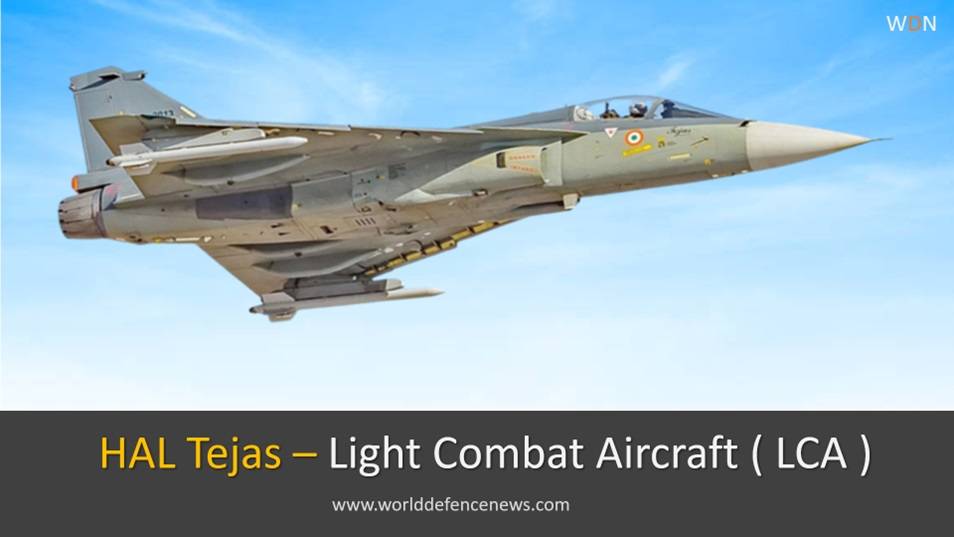
HAL Tejas
Indian Multirole Light Combat Aircraft ( LCA )
The HAL Tejas is a light combat aircraft (LCA) developed and manufactured by the Indian state-owned company Hindustan Aeronautics Limited (HAL). The LCA was designed by the Aeronautical Development Agency (ADA), another Indian company designated as project manager for the development of the LCA.
The Tejas fighter has already been inducted into the Indian Air Force (IAF) and the first squadron of the Tejas fighter aircraft ( Sq No 45, Flaying Daggers ) is now operational. Due to its unique design and combat capabilities, LCA Tejas is becoming the preferred choice for many international customers.

The LCA Tejas is a single-engine, omnirole, light-weight, highly agile, multi-mission supersonic fighter aircraft specially designed for the Indian Air Force (IAF). The Indian air force intends to induct different variants of LCA in large numbers to ramp up the depleting squadron strength.
The aircraft is now fully operational despite initially taking a long time for its development. The LCA project came into focus after the advent of the BJP government in the year 2014 under the leadership of Prime Minister Narendra Modi. Ex-Defence Minister Manohar Parrikar also played a key role in making this ambitious project a success story.
HAL Tejas - General Specifications
General Information | HAL Tejas General Information |
Lead Agency And Manufactured By | Hindustan Aeronautics Limited (HAL) |
Designed And Developed By | Aeronautical Development Agency (ADA) |
Generation | HAL Is 4.5 Plus Generation |
Aircraft Category | Light Combat Aircraft |
Aircraft Design Type | Delta Wing , Fly-By-Wire |
Aircraft Engine Category | Single Engine Fighter Jet |
Primary Designated Role | Omnirole - Multirole , Multi-mission |
HAL Tejas Radar Type | AESA Radar |
HAL Tejas Radar | Israeli Elta EL/M 2052 And DRDO Uttam |
LCA Tejas Variants | Tejas - IOC , Tejas - FOC , Tejas MK1 And MK2 |
HAL Tejas
General Characteristics
The HAL Tejas has been designed by HAL as a multi-mission, omnirole fighter jet capable of performing a wide range of operations. The HAL Tejas is categorized as a Light Combat Aircraft ( LCA ). Despite its compact size, the LCA Tejas is a highly capable fighter aircraft and a formidable opponent in the sky.
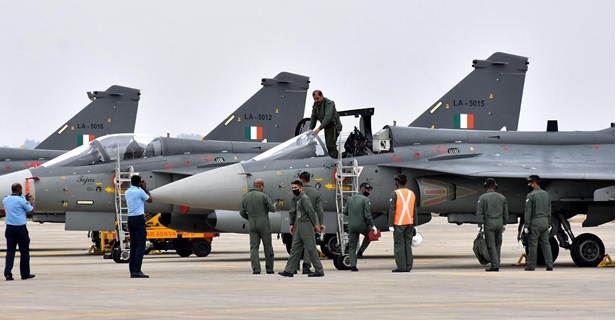
HAL Tejas | Specification | Specification |
Crew | Single Seater | Trainer - Twin Seater |
Length | 13.2 Meters | 43 Feet 2 Inch |
Wingspan | 8.2 Meters | 26 Feet 11 Inch |
Height | 4.4 Meters | 14 Feet 5 Inch |
Wing Area | 38.4 Sq. Meters | 413 Sq. Feet |
Empty Weight | 6560 Kg | 14,462 lb |
Gross Weight | 9800 Kg | 21,605 lb |
Max Takeoff Weight | 9800 Kg | 29,762 lb |
Fuel Capacity - Internal | 2458 Kg | 5,419 lb |
Fuel Capacity - External | 5300 Kg | 11,700 lb |
Engine : GE 404 | 85 KN | 19,000 lbf |
Important Features
Features Of HAL Tejas Fighter Aircraft
The HAL Tejas is a single-engine, lightweight, multirole fighter aircraft developed by Hindustan Aeronautics Limited (HAL) for the Indian Air Force.
the HAL Tejas is a highly capable fighter aircraft that combines advanced technology with exceptional performance and manoeuvrability. Its lightweight design, advanced avionics, and stealth features make it a formidable opponent in air-to-air combat, while its ability to carry a range of weapons makes it highly effective in air-to-ground operations.
Some of the important features of the HAL Tejas fighter aircraft are:
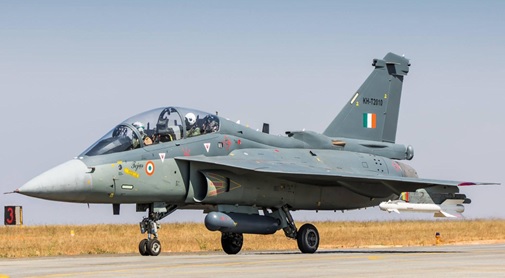
- Lightweight: The HAL Tejas is a lightweight fighter aircraft, weighing only around 6,560 kg. Its light weight makes it highly maneuverable and enables it to operate from shorter runways, which is a significant advantage in combat situations.
- Advanced Avionics: The Tejas is equipped with advanced avionics, including an integrated digital avionics suite, fly-by-wire flight control system, and a glass cockpit. These features provide the pilot with a high degree of situational awareness and enable them to make split-second decisions.
- Stealth Capabilities: The HAL Tejas incorporates several stealth features that make it difficult to detect by radar. These features include its composite structure, radar-absorbing materials, and a reduced radar cross-section.
- Armament: The Tejas is capable of carrying a range of weapons, including air-to-air missiles, air-to-ground missiles, and precision-guided munitions. It also has an internal 23mm twin-barrel cannon.
- Performance: The Tejas is powered by a GE F404-GE-IN20 turbofan engine, which gives it a top speed of Mach 1.8 and a range of over 3,000 km. It can also perform high-G maneuvers, including vertical takeoff and landing.
- Maintenance: The Tejas is designed for ease of maintenance, with a modular structure that allows for quick and easy replacement of components. It also has a built-in health monitoring system that alerts ground crew to any issues that need attention.
HAL Tejas
LCA Weapons And Armaments
The HAL Tejas is equipped with a wide range of weapons. For close air combat, Tejas can carry short-range air-to-air missiles such as the Russian R73, the Israeli Python 5, and ASRAAM by MBDA. The Tejas can carry the Israeli I Derby ER, the Russian R77, and the Indian DRDO developed Astra Mark 1 for beyond visual range BVR air combat.
The US has also offered to integrate the AIM 120D AMRAAM BVR missile. The DRDO also plans to integrate the Meteor BVR missile ( 180 km) developed by MBDA once the HAL Tejas is equipped with the indigenous Uttam AESA radar being developed by DRDO.
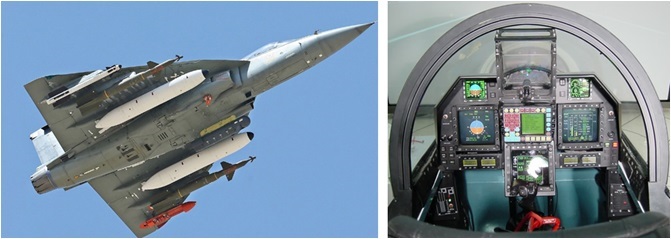
LCA Weapons Package
HAL Tejas Weapon | Weapon Type | Weapon Details |
Guns | 1 x 23 mm Twin-Barrel | GSH-23 Cannon |
R - 73 | Air-To-Air Missile , 30 Km | Short Range , Russia |
I Derby ER | Air-To-Air Missile , 120 Km | BVR Long Range , Israel |
Python 5 | Air-To-Air Missile , 20 Km | Short Range , Israel |
ASRAAM | Air-To-Air Missile , 30 Km | Short Range , MBDA , UK |
ASTRA MK 1 | Air-To-Air Missile , 110 Km | BVR Long , DRDO , India |
R -77 | Air-To-Air Missile , 110 Km | BVR Long Range , Russia |
Kh-59ME, Kh-59L, Kh-59T | Air-To-Surface Missile , 200 Km | Long Range Ground Attack , Russia |
AASM-Hammer | Air-To-Surface Missile , 150 Km | Long Range Ground Attack , French By Safran |
BrahMos-NG | Air-To-Surface Cruise Missile , 500 Km | Long Range Ground Attack , India By DRDO |
Rudram 1 | Anti Radiation ARM Missile , 200 Km | Long Range Ground Attack , India By DRDO |
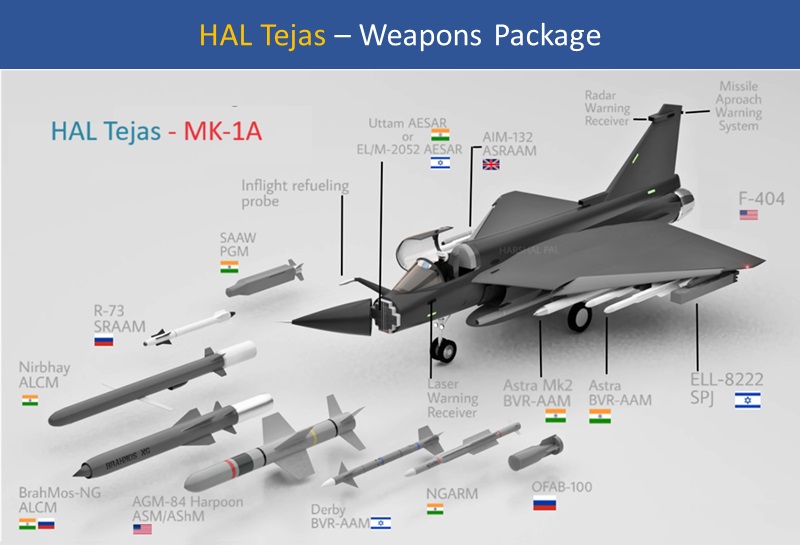
HAL Tejas
Technology Development For LCA Tejas Light Combat Aircraft
HAL first developed and built two technology demonstration vehicles, TD1 and TD2, based on tail-less delta wing aircraft with relaxed static stability (RSS) and control-configuration for enhanced maneuverability. This design was inspired by the French Mirage 2000 currently in service with the IAF.
The LCA Tejas is a single-engine aircraft powered by a single GE-404 engine. The GE-404 engine is an afterburning turbofan engine that generates thrust of 85KN. The DRDO is currently working on an indigenous aircraft engine project named Kaveri. The Kaveri engine is still under development.
The HAL Tejas has a maximum take-off weight of 13.5 tons . The LCA Tejas design is based on Relaxed Static Stabilities (RSS). The aircraft design needs fly-by-wire technology that allows the pilot to electronically control the plane with the help of onboard computers.


The DRDO developed Fly-By-Wire technology and Multi-Mode-Radar (MMR), two crucial technologies for the HAL Tejas project. The US company Lockheed Martian was also contracted by DRDO to provide technical expertise for the development of Fly-By-Wire technology. However, this agreement was cancelled by the US government due to American sanctions after India’s first nuclear explosion.
This was a first major project for the Indian aviation industry. The DRDO had to overcome major technological hurdles to successfully execute the LCA project. The DRDO had to start the work from scratch to indigenously develop such high-end, sophisticated technology. Therefore, the LCA project was delayed and also resulted in a substantial project cost overrun.
LCA Tejas
Indigenous Kaveri Engine For HAL Tejas
HAL is currently developing an indigenous engine to power the HAL Tejas. This indigenous engine development project is named “Kaveri.” The GTRE GTX-35VS Kaveri engine project has achieved significant progress but is still under development.
The Kaveri engine is being developed by the Gas Turbine Research Establishment (GTRE), a unit of DRDO. This was an ambitious project, and HAL had to start from scratch considering he had no prior experience.
The first prototypes of the Kaveri engine failed to perform well on various parameters and could not generate the required thrust. Therefore, it was decided to use the American GE F404 engine instead to roll out the first few batches of LCA Tejas to avoid any further delay.

As a part of the offset deal for Dassault Rafale sale to the Indian Air Force, the French aerospace company Safran Aircraft Engines (previously Snecma) will collaborate with DRDO to revive the Kaveri engine.
The GTRE has now resolved most of the technological gaps and performance issues associated with the Kaveri engine, and the new prototype will soon be ready for technical evaluation.
Latest Update On Kaveri Engine For HAL Tejas
As a part of the offset deal for Dassault Rafale sale to the Indian Air Force, the French aerospace company Safran Aircraft Engines (previously Snecma) will collaborate with DRDO to revive the Kaveri engine.
The GTRE has now resolved most of the technological gaps and performance issues associated with the Kaveri engine, and the new prototype will soon be ready for technical evaluation.
HAL Tejas Production Models
Difference Between HAL Tejas MK1 , MK1A , MK2
Aircraft Feature | Tejas MK1 | Tejas MK1A | Tejas MK2 |
Latest Picture | |||
Design Details | Single Seater, Delta Wing Light Combat Aircraft, IOC Varient. | Single Seater, Delta Wing Light Combat Aircraft, FOC Varient , Modified As Per IAF Requirements. | Single Seater, Delta Wing With Canard Light Combat Aircraft, Modified As Per IAF Requirements. |
Aircraft Engine | GE 404 Turbofan | F404-GE-IN20 Engine | GE F414 INS6 Engine |
Engine Thrust KN | 84 KN | 84 KN | 98 KN |
Radar | Elta EL/M 2052 AESA Israeli Radar | Elta EL/M 2052 AESA Israeli Radar | DRDO Uttam AESA Indian Radar |
Mid Air Refueling | No | Yes | Yes |
Electronic Warfare Suite | No | DARE Unified Electronic Warfare Suite (UEWS) | Yes |
Latest BVR Capability | R-77 , I Derby ER | R-77 , I Derby ER , Astra MK1 | I Derby ER , Astra MK1, Astra MK2 , MK3, MBDA Meteor |
Self-Protection Jammer Pod | Externally Mounted Self Protection Jammer (SPJ) | Externally Mounted Self Protection Jammer (SPJ) | Externally Mounted Self Protection Jammer (SPJ) |
Digital Radar Warning Receivers | Yes | Yes | DARE Duel Color Missile Approach Warning System ( DCMAWS ) |
Combat Operation Range | 1850 Km | 1850 Km | 2500 Km |
Service Ceiling | 16500 Meters , 50,000 Feets | 16500 Meters , 50,000 Feets | 17300 Meters , 56,758 Feets |
Aircraft Health And Usage Monitoring Systems (HUMS) | No | No | Yes |
Integrated Infrared Search And Track (IRST) System | No | No | Yes |
Hard Points | 8 | 8 | 11 |
Max Speed | Mach 1.6 , 1960 Kmph | Mach 1.6 , 1960 Kmph | Mach 1.8 , 2385 Kmph |
Max Take Off Weight | 13500 Kg | 13500 Kg | 17500 Kg |
G Limits | + 8 / - 3.5 | + 8 / - 3.5 | + 9 / - 3.5 |
Current Status | Already Inducted | Already Inducted | Expected To Be Inducted 2026 |
HAL Tejas Production Status
What Is The Status Of LCA Tejas Production ?
Tejas Mark 1 ( IOC Standard )
Tejas Mark 1 (IOC standard) is a variant based on the Initial Operational Clearance (IOC). This is a single-seat variant designed for the Indian Air Force. The IOC standard Tejas has already been inducted into the 45th Squadron of the Indian Air Force, named Flying Daggers. The Indian Air Force currently operates 16 jets of the IOC variant. All 16 IOC fighters will be later upgraded to FOC standards.
Tejas Mark 1 ( FOC Standard )
Tejas Mark 1 (FOC standard) is a single-seat variant of Tejas based on the Final Operational Clearance standard issued on February 20th, 2019 and produced for the Indian Air Force.
The FOC variant will have BVR ( Beyond Visual Range ) missile capability, improved dynamics and flight performance, an air-to-air refueling probe, hot-refueling capability, and a wide range of air-to-ground weapons.
HAL Tejas Mark 1A
Tejas Mark 1A is an upgraded variant of the FOC standard variant, designed specially based on the requirements of the Indian Air Force (IAF). Both ADA and HAL had proposed the upgraded Tejas Mark 1A variant to incorporate IAF requirements and bag the order for substantial numbers.
Tejas Mark 1A has been designed as a stop-gap variant to keep production running until Mark 2 production starts, which is facing some delays.
The Mark 1A variant will have a superior avionics and weapons package. This variant’s capabilities include an AESA radar, air-to-air refueling capability, an external ECM pod, and improved avionics, aerodynamics, a lower radar signature, and ease of maintenance.
HAL Tejas
Indigenous Uttam AESA For LCA Tejas
Aircraft radar is one of the most crucial components, especially for fighter aircraft. The technologically superior radar can offer a major competitive edge in air combat.
Aircraft radar performs two important functions. Radar scans the airspace to track, locate, and identify aerial targets. It also directs the air-to-air and ground attack munitions to precisely hit the target.
Active Electronically Scanned Radar (AESA) is the latest generation of radar technology that has significantly improved the radar’s performance. The AESA radar offers superior performance as compared to conventional radar.
The HAL Tejas MK1 and MK1A are equipped with Israeli-made AESA radar for the initial few production batches ( which include Tejas variants IOC, FOC, MK1, and, MK1A). The Israeli AESA radar was selected to avoid Tejas production delays.
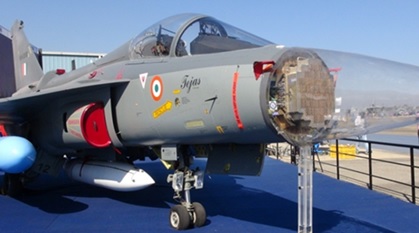
The AESA radar is equipped with a computer-controlled phased array antenna that can electronically rotate the radio wave beam without the need of a mechanical head.
The AESA radar antenna consists of a number of TRM modules. The AESA radar’s performance depends on the number of small solid-state transmit/receive components called the TRM modules. Each TRM module independently performs the functions of a transmitter and/or receiver for the antenna.
The first two HAL Tejas variants (Tejas MK1 and MK1A) will be outfitted with the Israeli-made Elta System EL/M-2052 AESA radar. HAL is currently working on the indigenous “Uttam” AESA radar in order to increase export potential for Tejas. The Uttam AESA radar is still under testing and evaluation phase and it is expected to be installed on Tejas MK2 variant.
LCA Tejas
Astra BVR Missile Integration On HAL Tejas
The beyond visual range (BVR) air-to-air missile provides the combat capability to engage aerial targets beyond visual range. The BVR capability is one of the most crucial components of the weapons package for the fighter aircraft.
HAL has incorporated a wide range of the latest BVR missiles from Russia, Israel, and India into the Tejas design. The DRDO is currently working on an indigenous BVR missile project named “Astra.”
The combination of the indigenous Uttam AESA radar and the Astra BVR missile will provide HAL Tejas with a unique, cost-effective BVR capability. Astra variants (MK1, MK2, and MK3) are being developed, and the Astra MK1 is already operational, with the IAF having placed the first order.

HAL approached MBDA, a European missile manufacturer, about integrating Meteor BVR missiles on the Tejas aircraft. However, MBDA refused to integrate Meteor BVR on Tejas, citing the Tejas MK1 and MK1A variants’ Israeli-made AESA radar.
However, the Tejas MK2 variants will have indigenous Uttam AESA radar, which might facilitate the integration of the MBDA Meteor missile. HAL was initially eager to integrate Meteor due to the Indian Air Force’s (IAF) strong recommendation.
The HAL quickly realised that developing indigenous BVR missiles is critical to the success of the export variant of the LCA Tejas, and that relying on foreign-origin BVR missiles would be a major limiting factor in realising the export potential.
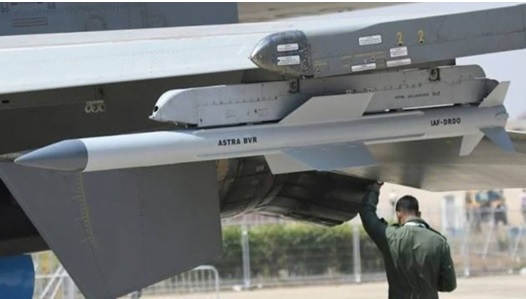
The indigenous Astra MK1 is already operational, and its integration with the Su30 MKI and Tejas is complete. The Astra MK2 and MK3 are currently under development, and DRDO has accorded top priority to their development.
The Astra MK3 will match the design features and exceed the range as compared to contemporary American and European BVR missiles. It will be the first indigenous air-to-air missile based on solid-fuel ramjet propulsion developed with Russian collaboration.
HAL Tejas Cockpit
Futuristic LCA Tejas Cockpit Design Features
The HAL Tejas cockpit design incorporates the most recent design features found in 4.5+ generation contemporary modern fighter jets. The HAL and ADA have spared no efforts to integrate a wide range of sensors and display their data to the pilot.
The LCA Tejas cockpit provides a clear view of all the crucial information for the pilot. The Tejas cockpit has been designed to provide complete situational awareness to the pilot, displayed on three main multi-functional display (MFD) monitors.
The HAL Tejas MK1 and MK1A cockpits will have three prominent multi-functional display units for presenting information to the pilot. The Tejas cockpit is fitted with a night vision-compatible glass cockpit with Martin Baker (UK) zero-zero ejection seats.
Tejas IOC And FOC Cockpit

Tejas MK1 And MK1A Cockpit
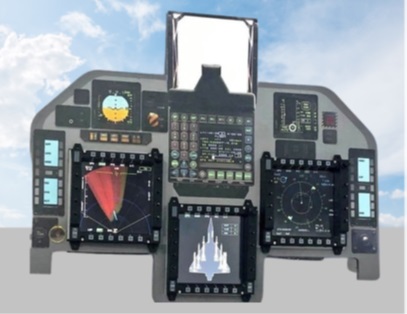
The Tejas cockpit has three colour liquid crystal multifunction displays developed by Bharat Electronics. The cockpit comes with a head-up display developed by the government institute Central “Scientific Instruments Organization” (CSIO), based in Chandigarh.
A helmet-mounted display and sight (HMDS) system is already integrated with all the variants of the aircraft. The hands-on throttle and stick control system will be centrally located on the Tejas MK1 and MK1A, reducing the pilot’s workload and allowing pilot to stay focused on the mission.
Tejas MK2 Cockpit Design

The Tejas design incorporates a quadruple fly-by-wire digital automatic flight control system, and its navigation suite includes a Sagem SIGMA 95N ring laser gyroscope inertial navigation system with an integrated global positioning system.
The communications suite includes VHF-UHF radio communications with built-in countermeasures, air-to-air and air-to-ground data links, as well as a HAL information friend-or-foe interrogator. In addition, the cockpit includes an environmental control system developed by Spectrum Infotech of Bangalore.
The avionics suite has an integrated utility health-monitoring system, ground proximity warning system, terrain-referenced navigation system, instrument landing system, global positioning system, store management system, and three 1553B 32-bit mission computers.
HAL Tejas Helmet Mounted Display
Display And Sight Helmet (DASH) of HAL Tejas Developed By Israel Elbit Systems
HAL Tejas pilots use the Israeli Elbit DASH-IV Helmet Mounted Display and Sight (HMDS) system. Elbit Systems’ Display and Sight Helmet (DASH) enables pilots to lock on and fire their weapons simply by looking at the target.
With Night Vision Goggles, the Elbit DASH significantly improves night flying capabilities. The HMDS provides colour day and night displays, 3D symbology, head tracking, sensors, and weapon cuing.
The Elbit DASH allows pilots to constantly maintain the highest levels of situational awareness—whether air-to-air, air-to-ground, or to-and-from the mission core—in order to successfully achieve their operational goals.
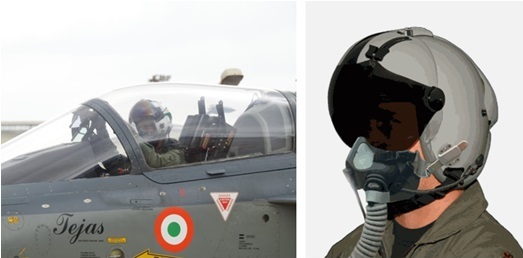
Elbit Systems’ Helmet Mounted Systems (HMS) enable pilots to view flight data, sensor data, and 3D location-based information within direct line-of-sight (LOS). The HMS allows the pilot to comprehend the data sent by the aircraft’s sensors.
The avionics systems of the aircraft then guide the missiles to the target by simply looking at the target. Elbit Systems is a global leader in HMS systems, and it has already been integrated into all the variants of HAL Tejas.
HAL Tejas Latest Updates 2024
The Indian Air Force is expected to get deliveries of the latest variant Light Combat Aircraft LCA Tejas MK-1A from February 2024 onwards. As per latest Ministry of Defence press release, the MK1A variant of the indigenously-built fighter jet will be equipped with a plethora of weapons, including ait-to-ground missiles, beyond visual range BVR missiles.
The HAL Tejas has demonstrated proven track record of completing seven years in service in the IAF. The IAF is eagerly awaiting to induct latest MK1A variant and its future variants will form the mainstay of the Indian Air Force (IAF).
In February 2021, the MOD had sealed a Rs 48,000 crore deal with state-run aerospace major Hindustan Aeronautics Ltd for procurement of 83 Tejas MK-1A fighter jets for the IAF.
The Tejas potential buyers include Egypt, Argentina, the US, Australia, Indonesia, Malaysia and the Philippines are among the countries showing keen interest in procuring Tejas aircraft.
As confirmed by MOD, the LCA MK-1A will have “updated avionics as well as an Uttam AESA active electronically steered radar, updated electronic warfare suite and latest ASTRA beyond visual range BVR missile capability.”
“The new variant will be capable of firing a plethora of weapons from increased stand-off ranges. Many of these weapons will be of indigenous origin. The LCA MK-1A will see a substantial increase in the overall indigenous content of the aircraft,” the ministry said.
It said the deliveries of the aircraft are expected to commence in February 2024. Tejas has been designed to provide multi-mission capability to undertake the air dominance, air defence, maritime reconnaissance and ground attack strike roles.
The ministry said Tejas offers maintenance free handling and enhanced maneuverability, and that this capability is further enhanced with its multi-mode airborne radar, helmet mounted display, self-protection suite and laser designation pod.
MOD's New Order For 97 LCA Tejas
State owned Indian aerospace major Hindustan Aeronautics Limited (HAL) has received a tender from the Ministry Of Defence (MOD) for the production of additional new 97 light combat aircraft (LCA Mk-1A) Tejas for the Indian Air Force. The new order of 97 LCA Tejas fighter jets are expected to cost around Rs 67,000 crore.
Government Of India MOD is going ahead with the largest order of 97 LCA Tejas fighter aircrafts. This will be the government’s largest-ever purchase of indigenously designed and built fighter aircraft by state owned HAL.
The Ministry of Defence (MoD) has already issued Hindustan Aeronautics Ltd (HAL) a request for proposal (RFP) for 97 Tejas Mark 1A fighter aircraft. A Request for Proposal (RFP) is a formal document issued by an organization to solicit bids from potential suppliers or vendors for the provision of goods or services.
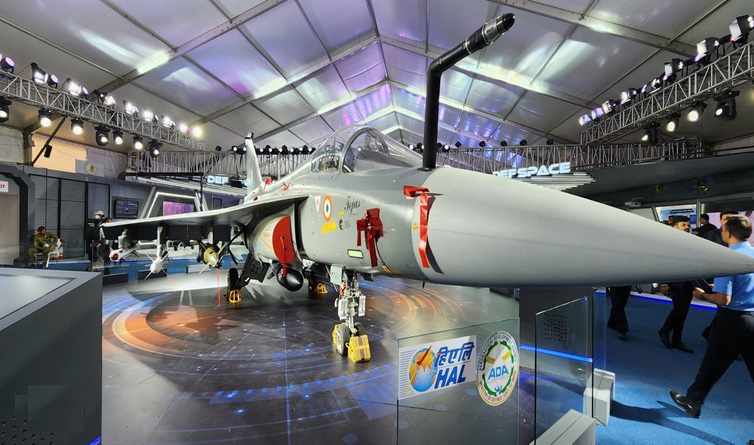
The RFP outlines the organization’s requirements, expectations, and evaluation criteria, inviting interested parties to submit proposals detailing their offerings, pricing, and capabilities. The RFP serves as a transparent and structured way for organizations to gather competitive bids, assess vendor suitability, and ultimately select the most suitable provider to fulfil their needs.
A HAL spokesperson has confirmed the MOD’s intent to place order of 97 HAL Tejas. The MOD has asked HAL the defence public-sector undertaking (DPSU) to submit the detailed proposal within three months.
HAL is close to completing an earlier MoD order for 40 Tejas Mark 1 fighters (two squadrons). Following that, the MoD placed an order in February 2021 for 83 Tejas Mark 1A fighters (four squadrons) worth Rs 45,700 crore.
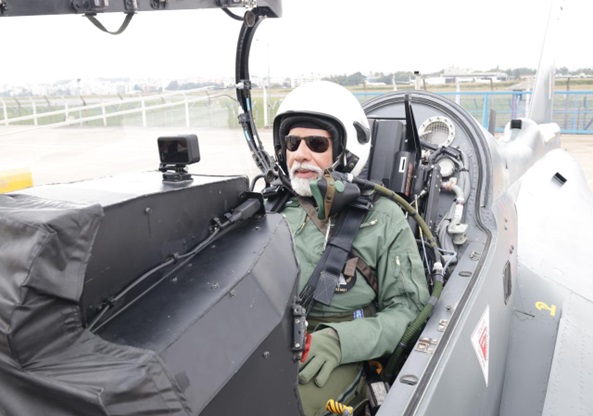
The six Tejas squadrons already ordered currently under production by HAL will now be supplemented by this additional five squadrons (97 Tejas Mark 1A), taking the total number of indigenous Tejas fighters for IAF to 11 squadrons.
As per the MOD directives, the new production of 97 Tejas Mark 1A jets will have more than 65 per cent indigenous content. Contracted deliveries of the aircraft are expected to commence in February 2026.

